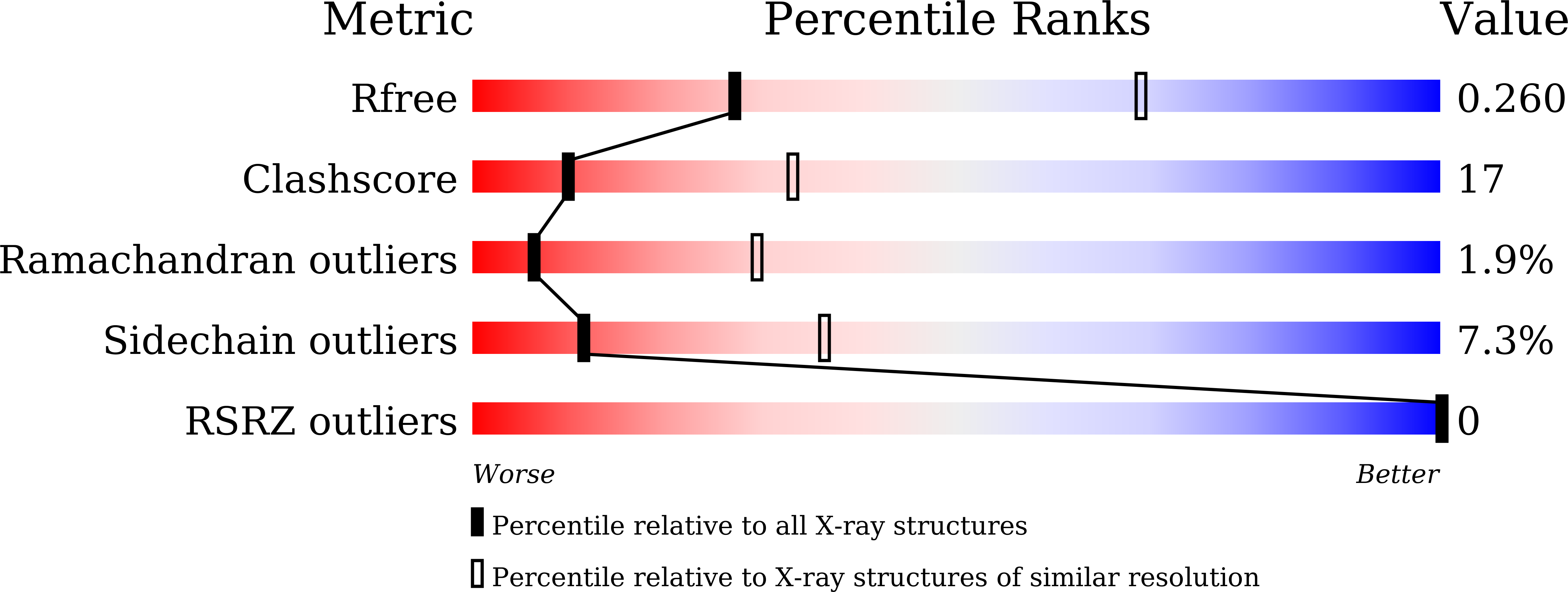beta-Carotene alleviates substrate inhibition caused by asymmetric cooperativity.
Liao, J., Shahul Hameed, U.F., Hoffmann, T.D., Kurze, E., Sun, G., Steinchen, W., Nicoli, A., Di Pizio, A., Kuttler, C., Song, C., Catici, D.A.M., Assaad-Gerbert, F., Hoffmann, T., Arold, S.T., Schwab, W.G.(2025) Nat Commun 16: 3065-3065
- PubMed: 40157902
- DOI: https://doi.org/10.1038/s41467-025-58259-7
- Primary Citation of Related Structures:
8J2U, 8J2V, 8J2Z, 8J31, 9J9K, 9LRJ - PubMed Abstract:
Enzymes are essential catalysts in biological systems. Substrate inhibition, once dismissed, is now observed in 20% of enzymes 1 and is attributed to the formation of an unproductive enzyme-substrate complex, with no structural evidence of unproductivity provided to date 1-6 . This study uncovers the molecular mechanism of substrate inhibition in tobacco glucosyltransferase NbUGT72AY1, which transfers glucose to phenols for plant protection. The peculiarity that ¦Â-carotene strongly attenuates the substrate inhibition of NbUGT72AY1, despite being a competitive inhibitor, allows to determine the conformational changes that occur during substrate binding in both active and substrate-inhibited complexes. Crystallography reveals structurally different ternary enzyme-substrate complexes that do not conform to classical mechanisms. An alternative pathway suggests substrates bind randomly, but the reaction occurs only if a specific order is followed (asymmetric cooperativity). This unreported paradigm explains substrate inhibition and reactivation by competitive inhibitors, opening new research avenues in metabolic regulation and industrial applications.
Organizational Affiliation:
Biotechnology of Natural Products, School of Life Sciences, Technical University of Munich, 85354, Freising, Germany.


















